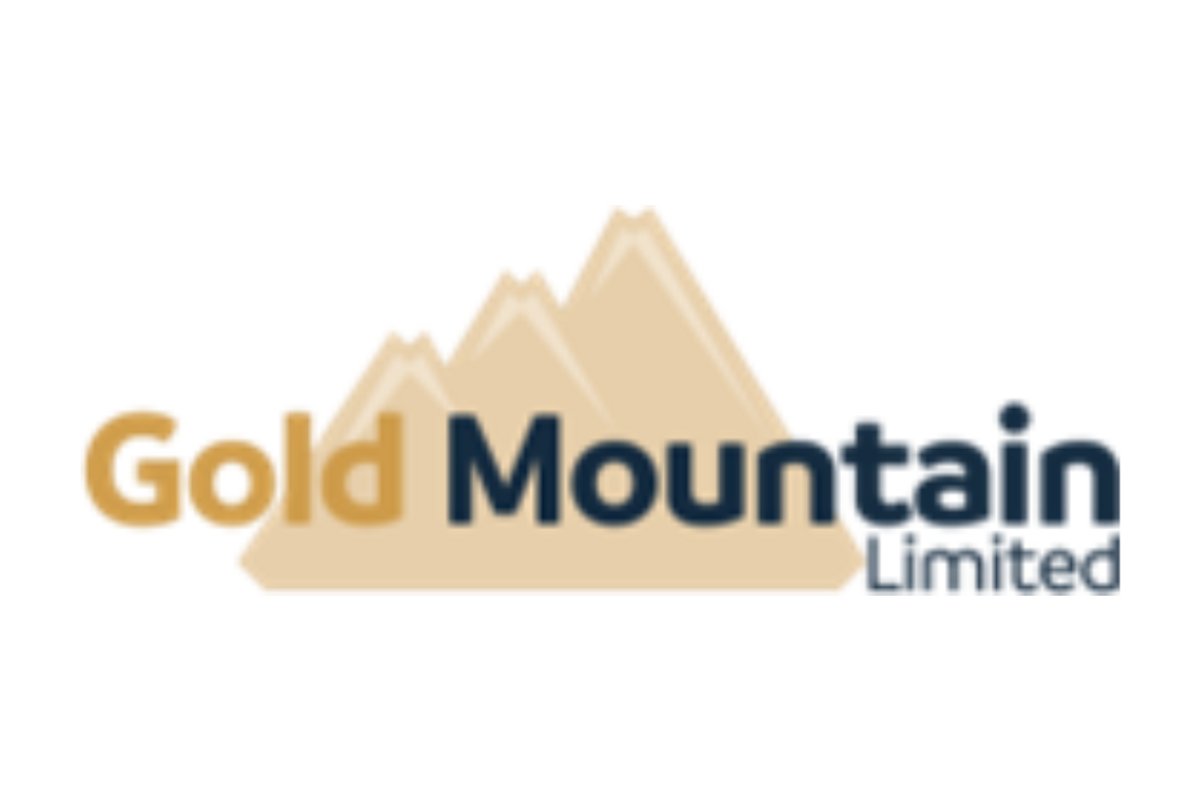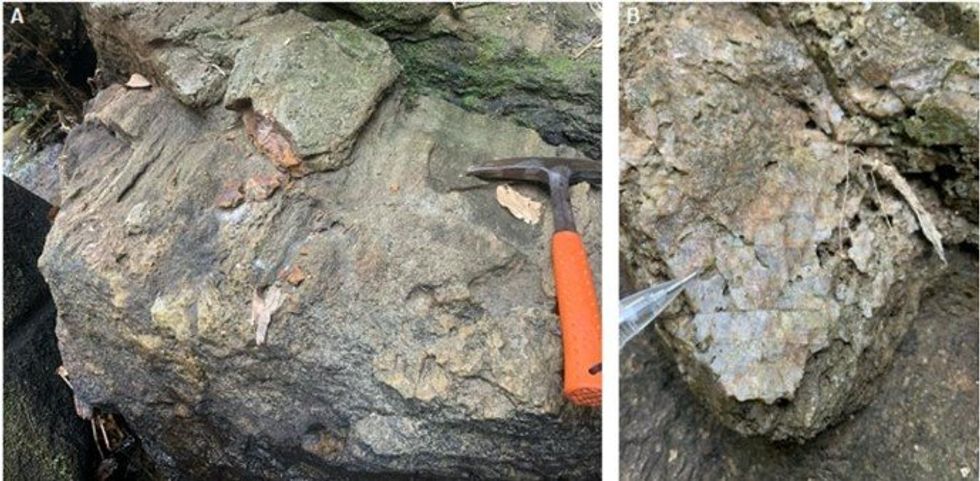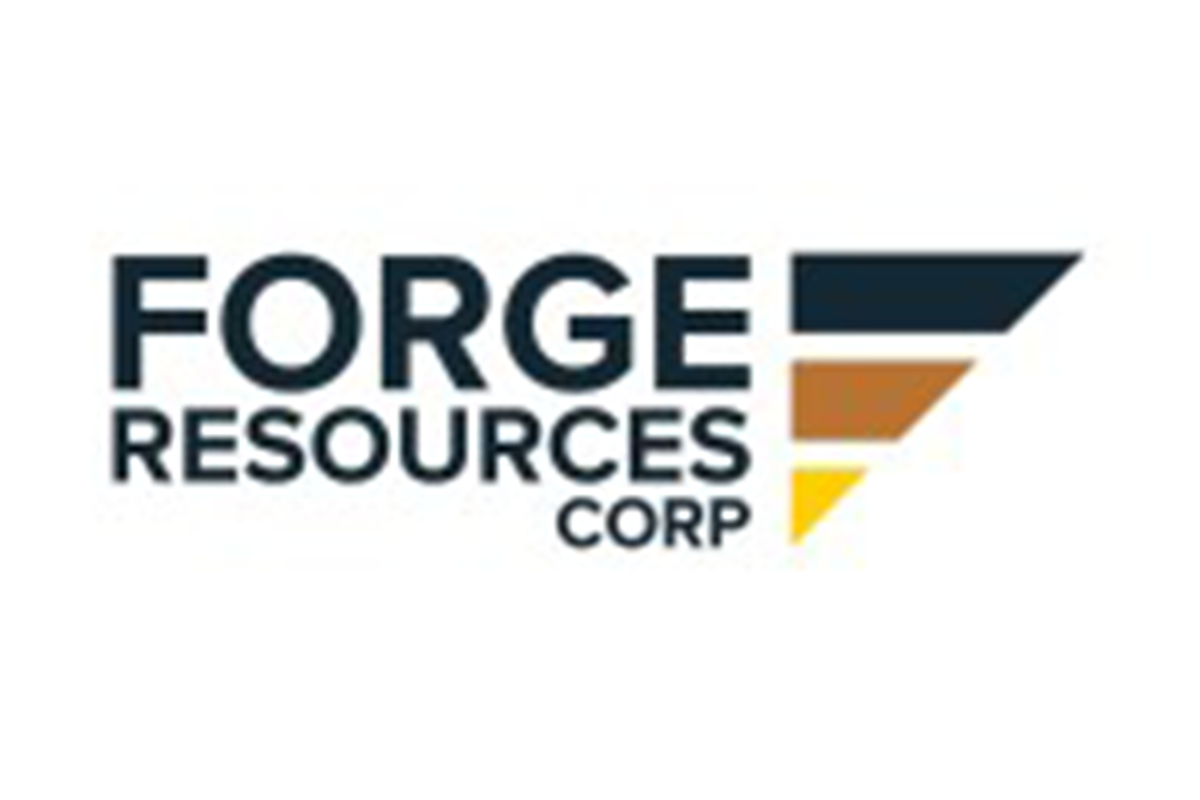
March 20, 2024
Gold Mountain Limited (ASX: GMN) (“Gold Mountain” or “the Company” or “GMN”) is pleased to announce it has visually identified numerous occurrences of both leucogranites and of charnockite in five of its tenements and silicified and sheared rocks that are often associated with good REE values.
Highlights
- Charnockite and leucogranites identified as well as sheared and silicified rocks
- Stream sediment sampling and mapping progressing well
- Favourable weathering profiles present
- Satellite imagery interpretation is in progress at present
GMN is delighted to announce that it has identified widespread charnockite and leucogranites in the five tenements in which stream sediment sampling is progressing. Charnockite is widespread and leocogranites have been identified at three locations in three separate tenements.
Sheared and silicified rocks have also been identified. The sheared rock found is a type that is often associated with high REE values according to one of our personnel with over 4 years experience working on REE in the region. Channel sampling of those exposures has been undertaken and samples are being prepared for dispatch.


The silicified rocks will also be sampled as they are also can be associated with high grade REE values.

Sampling commenced in tenements that are within 1.4 km of high-grade mineralisation drilled and reported by Brazilian Rare Earths in their Prospectus (lodged ASX 13 November 2023). There is no guarantee that GMN will have similar levels of results to results achieved by BRE, however they do assist in forming a basis for planned and targeted exploration.
Click here for the full ASX Release
This article includes content from Gold Mountain, licensed for the purpose of publishing on Investing News Australia. This article does not constitute financial product advice. It is your responsibility to perform proper due diligence before acting upon any information provided here. Please refer to our full disclaimer here.
The Conversation (0)
3h
Walker Lane Announces Shares for Debt Issuance
TSX-V: WLR Frankfurt: 6YL CMC Metals Ltd. (TSXV: CMB) (Frankfurt: ZM5P) ("CMC" or the "Company") is pleased to announce that it has settled and extinguished $77,600 of outstanding debt (the "Debt") through the issuance of common shares of the Company (the "Shares"). In accordance with the... Keep Reading...
11h
Forge Resources Intersects 3.4 g/t Gold over 44.75 Metres, and 800 Metre Step-Out Discovers 1.04 g/t Gold over 55.52 Metres at Alotta, Yukon
Forge Resources Corp. (CSE: FRG) (OTCQB: FRGGF) (FSE: 5YZ) ("FRG" or the "Company"), is pleased to announce full gold assay results from drill hole ALT-25-012 at the Payoff Zone intersecting 3.4 g/t gold over 44.75 metres from 256.23 metres and discovery results from hole ALT-25-013 at the... Keep Reading...
12h
Gareth Soloway: Gold, Silver, Bitcoin and More — Price Predictions for 2026
Gareth Soloway of VerifiedInvesting.com shares his outlook for gold, silver and Bitcoin.For gold, he outlines two different scenarios — a breakout to US$5,000 per ounce, potentially early in 2026, or a pullback to the US$3,500 to US$3,600 level. Don’t forget to follow us @INN_Resource for... Keep Reading...
20h
CMOC to Acquire Equinox Gold’s Brazilian Assets for US$1.015 Billion
China’s CMOC Group (OTC Pink:CMCLF) has agreed to buy a portfolio of gold assets in Brazil from Canada’s Equinox Gold (TSX:EQX,NYSEAMERICAN:EQX) for US$1.015 billion.CMOC said Monday (December 15) that it will acquire 100 percent of Equinox Gold’s Brazilian operations, comprising the Aurizona... Keep Reading...
23h
Brixton Metals Reports the Balance of its 2025 Drill Results at the Trapper Gold Target
Brixton Metals Corporation (TSX-V: BBB, OTCQB: BBBXF) (the " Company " or " Brixton ") is pleased to announce updated and complete assay results from the Trapper Gold Target at its wholly owned Thorn Project in northwestern British Columbia. This release includes multi-element results for all... Keep Reading...
16 December
Walker Lane Announces Board Update
TSX-V: WLR Frankfurt: 6YL Walker Lane Resources Ltd. (TSXV: WLR,OTC:CMCXF) (Frankfurt: 6YL) "Walker Lane") announces the resignation of John Land as a Director of the Company and the appointment of Mr. Kevin Brewer, Director and CEO as interim Chairman of the Board. The Board wishes to thank Mr.... Keep Reading...
Latest News
Latest Press Releases
Related News
TOP STOCKS
American Battery4.030.24
Aion Therapeutic0.10-0.01
Cybin Corp2.140.00




